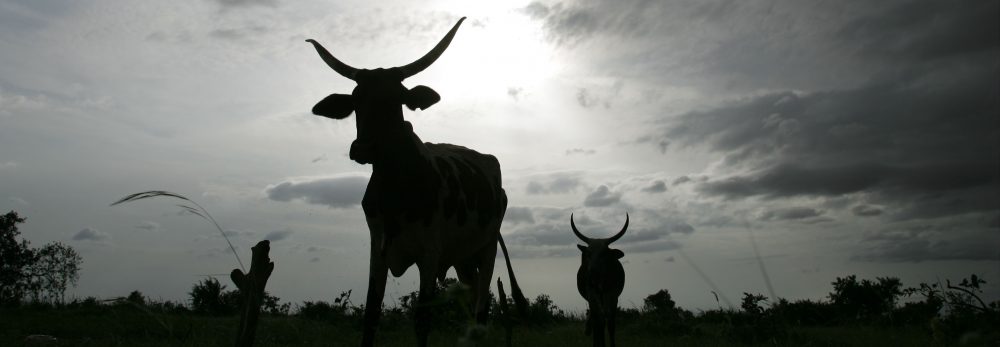The world’s first Global Plan of Action for Animal Genetic Resources was agreed at a recent FAO conference in Switzerland from 3 to 7 September. While international negotiations continue, much can be done now, before it’s too late.
The First International Technical Conference on Animal Genetic Resources for Food and Agriculture, held in Interlaken in September, was a week-long series of negotiations organized by the Food and Agriculture Organization of the United Nations (FAO) and hosted by the Government of Switzerland to consider the current state of the world’s animal genetic resources and to reach international agreement on the best ways forward to protect these resources for long-term use. The conference opened with the launch of the world’s first report on the status of farm animal genetic resources, The State of the World’s Animal Genetic Resources. By the end of the conference, the world’s first Global Plan of Action for Animal Genetic Resources had been agreed by representatives from 109 countries. The global plan identifies four high-priority areas for animal genetic resources: characterization, inventory and monitoring of trends and risks, sustainable use and development, conservation and policies, institutions and capacity building.
Progress made at the Interlaken Conference includes:
- Agreement on a global plan for identifying and conserving valuable livestock species
- Agreement that livestock keepers rights are fundamental and need to be considered as part of an inclusive and equitable global plan
- Agreement that incentives need to be provided to help the traditional custodians of indigenous animal genetic resources—usually small-scale livestock keepers—continue to keep their native breeds.
Overview of the Interlaken conference
On the first day of the conference, ILRI’s director general, Carlos Seré, presented a paper on ‘Dynamics of Livestock Production Systems, Drivers of Change and Prospects for Animal Genetic Resources’. He identified key drivers of change, how they were influencing current trends and future prospects, and their impacts on the management of animal genetic resources for food and agriculture.
Seré identified four drivers: economic development and globalization, changing market demands, environmental impacts and trends in science and technology. He described the trends in livestock production in industrial, crop-livestock and pastoral systems, emphasizing that while the trends are occurring in both developing and industrialized countries, the outcomes are different. In the developing world, some trends are reducing the ability of livestock keepers to improve their livelihoods, reduce their poverty and manage their natural resources. The industrial livestock production systems of developed countries have already greatly narrowed the livestock genepool, reducing our ability to deal with future uncertainties, such as climate change and zoonotic diseases.
Local breeds being crowded out
During the presentation, the ILRI director general cited replacement of indigenous tropical breeds with exotic animals as a key reason for the erosion of genetic diversity. Local breeds are estimated to be disappearing at the rate of one a month. This concern was echoed by the representative from the League for Pastoral Peoples and Endogenous Livestock Development. Ilse Köhler-Rollefson stated that policies relating to the introduction of exotic breeds and subsidies were helping large-scale production systems but hurting pastoralists.
Seré stressed that conserving our livestock genetic resources required appropriate institutional and policy frameworks and concerted international efforts. As these negotiations will take time, Seré proposed four complementary actions to improve the management of animal genetic resources and maintain our genetic options for the future. These are: provide incentives for in situ conservation of local breeds (‘keep it on the hoof’); facilitate movement of breeds within and between countries (‘move it or lose it’); match breeds to environments (‘livestock landscape genomics’); and establish genebanks (‘put some in the bank’).
These four strategies are practical steps that can help conserve indigenous tropical breeds. Seré cautioned that if actions are not taken now, it could be too late for some breeds that will soon be lost to the world forever.
Media help to raise awareness of ‘livestock meltdown’
There was extensive media coverage of the FAO Interlaken conference, with regional and international press and radio and local African TV all helping to raise awareness of the ‘livestock meltdown’ taking place.
Local livestock breeds at risk: Nature (3 September 2007) reported that indigenous animals are dying out as commercial breeds sweep the world.
‘Many of the world’s indigenous livestock breeds are in danger of dying out as commercial breeds take over, according to a worldwide inventory of animal diversity.
‘Their extinction would mean the loss of genetic resources that help animals overcome disease and drought, particularly in the developing world, say livestock experts.’
Read the full article at http://www.nature.com/news/2007/070903/full/070903-2.html (subscription required).










 In India, underprivileged families account for about one fourth of the population and contribute a major part of livestock production. Livestock are central to their livelihoods and culture. ‘Livestock in the livelihoods of the underpriviledged communities in India: A review’, is an extensive review of formal and grey literature addressing the premise that a good understanding by the research and development community of the role of livestock in the livelihoods of the underprivileged and their production and marketing systems is needed to guide effective research and development aiming at alleviating poverty.
In India, underprivileged families account for about one fourth of the population and contribute a major part of livestock production. Livestock are central to their livelihoods and culture. ‘Livestock in the livelihoods of the underpriviledged communities in India: A review’, is an extensive review of formal and grey literature addressing the premise that a good understanding by the research and development community of the role of livestock in the livelihoods of the underprivileged and their production and marketing systems is needed to guide effective research and development aiming at alleviating poverty.  Correct citation: Rangnekar D.V. 2006. Livestock in the livelihoods of the underprivileged communities
Correct citation: Rangnekar D.V. 2006. Livestock in the livelihoods of the underprivileged communities
